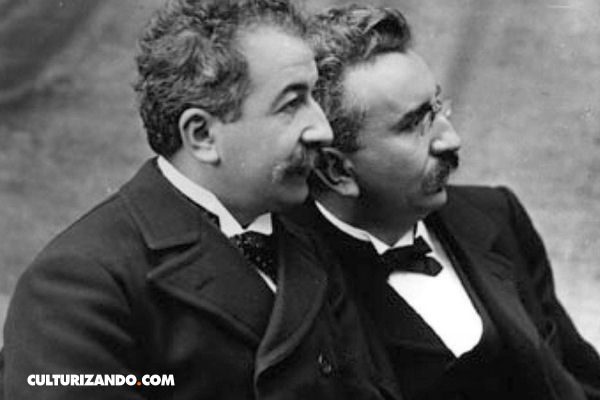The Lumière brothers, the fathers of cinema

Cinematography, also known as the seventh art, is the process of capturing and creating motion pictures through the use of film or digital media. Its origins can be traced back to the Lumière brothers, who are credited with inventing cinema and creating the first motion pictures. Cinematography involves the use of various techniques, such as lighting, framing, and camera movement, to tell a story and engage an audience through visual means.
Cinema and the Lumières
Antoine Lumière was a renowned French portrait painter who later turned to photography. In 1894, he was invited to showcase Edison’s kinetoscope, a device that allowed projections to be viewed through a window. On February 13, 1894, the Lumières patented the cinematograph, an improved version of the kinetoscope that allowed for the filming and projection of moving images.
In 1895, the Lumière brothers made history by screening the first film, entitled “Leaving the Lumière Factory,” which depicted workers leaving the factory after a shift. This short film, along with several other films made by the Lumière brothers, showcased everyday events and brought a new level of enchantment to the world of cinema. It’s worth noting that the film was shot just three days prior to its screening.
“The arrival of the train at the station (L’Arrivée d’un train à la Ciotat, 1895) was a great success, it is one of the most well-known films. With just 60 seconds in length, it simply depicted the arrival of a train at the La Ciotat station in southern France.”
With their “short films,” the Lumière brothers attempted to create a narrative language in cinema. Their first films were documentary-style, but also showed aspects of Parisian society in the late 19th and early 20th centuries.
Commercialization
After many failed attempts, Louis and Auguste Lumière finally succeeded in presenting their invention to the public on December 28, 1895 at the Grand Café in Paris, organized by Clément Maurice. The admission price was one franc and 33 people attended.
For the few spectators at this historic night of cinema, it was truly a groundbreaking experience. Among the audience were journalists, who were amazed by the technique used. One of them wrote: “This is one of the most extraordinary moments in the history of humanity.”
From that night on, the success that the Lumière brothers achieved was scandalous, the films traveled around the world from 1896.
However, Georges Méliés, director of the Robert Houdin theater, offered large amounts of money to the Lumière brothers to buy their patent; Auguste and Louis rejected the offers that they received at that time to deprive them of their “Cinematograph”.
In the first decade of the 20th century, multiple film studios emerged, both in the United States and in Europe, as filmmakers became aware of the great profits that exploiting the invention to the fullest would bring.
Later, Auguste passed away in Lyon (1954) and Louis in Bandol, France (1948), both of them supported social welfare projects through economic contributions.
Currently their color photography camera is in the film museum in Paris, with George Méliès’ camera.
5 facts about Lumières brothers
1. The Lumière brothers, Auguste and Louis, were pioneers of the film industry and are credited with creating the first motion picture camera, called the Cinematograph.
2. They were born in 1862 and 1864, respectively, in Besançon, France.
3. In 1895, they held the world’s first public film screening, showing 10 short films at the Grand Café in Paris.
4. In addition to their work in film, the Lumière brothers also made significant contributions to the development of photography and color photography.
5. After their deaths, their Cinematograph camera was donated to the film museum in Paris, where it remains on display to this day.
This is a translation of an original article in Spanish: Los hermanos Lumière, los padres del cine
